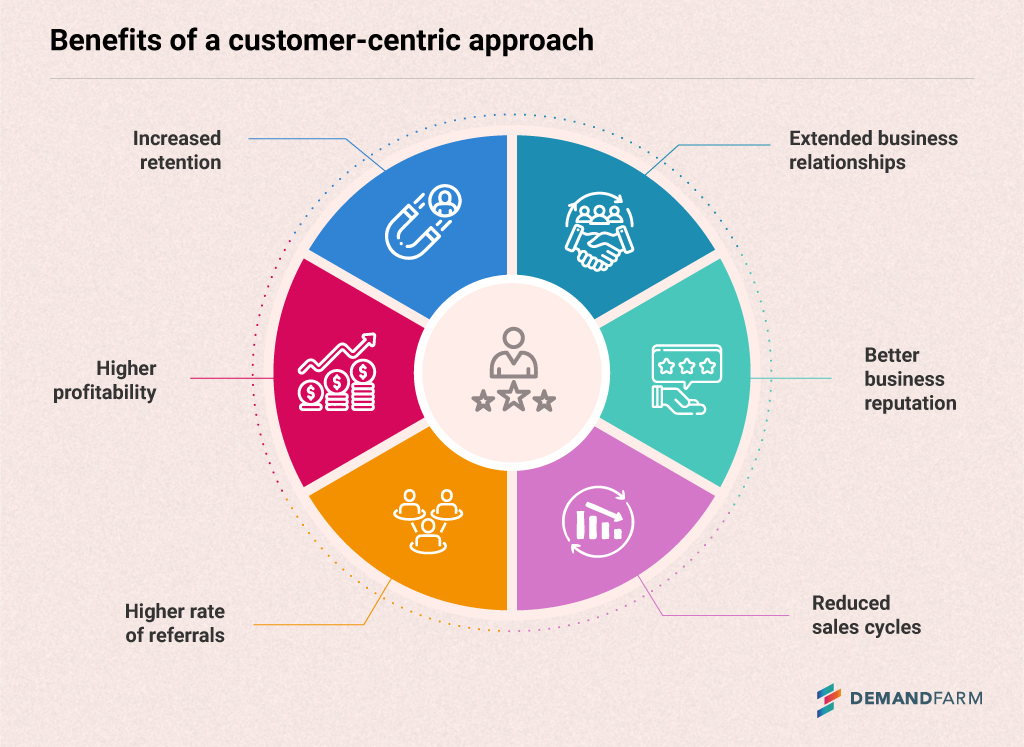

Yes, sales, as we knew it, is history! Old-school selling approaches are going out the window. The Rolodex, the cold calls, the scripts practiced in front of the mirror – are all fast fading into the background.
Welcome to the digital age of sales! Sounds intimidating?
We’re here to ease some of that anxiety about going digital – needing to dominate the online landscape. Because diving head-first into the digital sales ocean isn’t just about chasing the latest technology; it’s about genuinely understanding your customer.
With so much talk about technology and going digital, it’s easy to think that the revolution is just a technological one. But it’s equally about an evolution in mindset – a shift from transactional interactions to building meaningful relationships.
As Julie Lentz, Head of Industry Retail Sales, Google puts it: “Selling is a science, and an art. Data is the IQ and knowing what to do with it, or understanding the humans that make decisions based on that data is EQ.” – (Snippets from episode #11 of The Shift podcast)
The tools have changed, but the core remains the same. Remember the excitement of sealing your first deal or the satisfaction of a handshake signaling a closed sale? That essence is still here, just packaged differently.
Today, sales strategy is like navigating a vibrant digital landscape. There are opportunities at every corner, beckoning you to explore.
Digital-First Sales: What’s the Big Idea?
As the digital age evolves, customers will continue to evolve from passive recipients to active participants. They seek more than sales pitches; they desire solutions, strategies, and partners to co-create value.
It’s less about ‘selling software’ and more about demonstrating how it can transform operations and yield ROI. Customers want tailored strategies that address their unique challenges, market positioning and growth objectives. This is not a small minority. According to Salesforce, almost 3 out of 4 customers expect this.
While efficiency might push you toward operationalizing sales, relying heavily on data and established patterns can overlook nuances of key accounts.
Key accounts demand rich, durable exchanges, beyond surface-level pitches. Every interaction, request for proposal (RFP), feedback, and even subtle pauses during sales calls – all reveal a company’s needs.
Here, technology steps in as an enabler. Acting as an accelerator, it helps sales personnel swiftly gain insights. This empowers them to be more strategic, build relationships and align stakeholders effectively.
“Organizations have had to leverage technology to keep up with demand and manage operations. Technology brought value to processes, business operations, and intelligence. Clients who embraced technology quickly saw the benefits.” – Julie Lentz, Head of Industry Retail Sales, Google (Snippets from episode #11 of The Shift podcast)
Sales in the digital era is about crafting partnerships. While technology’s benefits are vital, it’s equally important to focus on genuine insights and let human touch drive partnerships. The goal is to deliver solutions that resonate with customers and elevate the partnership.
Data: Your North Star
If there are questions or doubts about how to keep pace and remain competitive, the answer lies in data. Think of data like your GPS on this journey, guiding you through the maze of decision-making.
A study by Salesforce revealed that salespeople who use CRM software are 40% more likely to close deals. Having relevant information and data at your fingertips puts you several steps ahead of those still playing the guessing game.
Based on a LinkedIn report almost half of all businesses that focus on social selling achieve their sales targets. And, close to 80% of companies relying on social selling do much better than those who don’t prioritize it. It’s not merely about posting content; it’s strategic engagement, similar to choosing the right networking events in the pre-digital era.
It’s not just about having the data. It’s about having the right data and leveraging it to tailor your pitches, understand market trends, and anticipate client needs before they even express them.
“Data is a tool that should save time and help sellers develop insights faster. Data should enable sellers to shine as insightful individuals. It should free sellers to be more strategic in developing relationships and in stakeholder alignment.” – Julie Lentz, Head of Industry Retail Sales, Google (Snippets from episode #11 of The Shift podcast)
Put Customers Front and Center
Let’s consider an executive summit. Every detail – from the agenda to the keynote topics – is carefully chosen to resonate with the concerns, and appeal to the aspirations of the attendees.

Your sales strategy should mirror this meticulous planning. You must recognize that your client isn’t just another name on a spreadsheet – they are the main event! Each proposal, solution and presentation must feel as if it was exclusively crafted for them. You must speak directly to their challenges and ambitions.
There are statistics to back this up. Forbes reported that customer-centric companies enjoy a profitability rate 60% higher than their counterparts. That’s not just a small margin; that’s a game-changer! It has also been well-cited that a genuine focus on customer experience can skyrocket retention by a minimum of 25%. These aren’t mere numbers; they’re clear indicators of the immense power of a customer-first approach.
Make use of your research, customer insights and industry knowledge to make every client feel special. Every single interaction and touch point should reflect your intention at creating partnerships aimed at mutual growth.
Ensuring your clients are in the lead is not just a smart strategy – it’s the foundation for lasting partnerships and sustainable business success.
Tech It Up!
In the world of B2B sales, where securing deals could mean navigating through layers of decision-makers and procurement systems, technology isn’t just an option – it’s your competitive edge. The days when sales decks were manually updated and leads tracked in bulky files are long gone.
Today, businesses are employing advanced Sales Engagement Platforms to automate and optimize every step. Predictive Analytics have become the go-to for market trends forecasts and client needs prediction. Digital evolution isn’t about sidelining the human element – it’s about amplifying it!
AI-driven tools can highlight which accounts are ripe for conversion. Sophisticated chatbots can qualify leads around the clock, and collaborative platforms ensure your sales, marketing and operations teams move in perfect harmony!
Moreover, when you buy datasets, you gain access to valuable information that can uncover new investment opportunities, generate qualified leads, and build data-driven products. These datasets help make informed decisions and stay ahead of the competition.
Technology is the very stage where your sales strategies play out and shine. So don’t be afraid to adopt the latest tech. In this race, forget about keeping pace and think about blazing the trail.
Keep Evolving
In a digital-first environment, change isn’t merely seasonal, it’s continual. In response to market shifts and customer demands, the ecosystem is forced to reinvent itself. The litmus test for sales success is adaptability.
Think of the shift from in-person demos to interactive, 3-D virtual product tours. This isn’t just a technological jump – it’s a leap in experience! Stakeholders from different continents can simultaneously deep dive into a product’s features.
Consider how prospecting has transformed. Instead of chasing cold leads, you can use AI-powered insights to identify decision-makers, understand pain points and offer precise solutions to match their challenges.
Continuous training is the engine driving this solution. It’s about spotting the next big shift and preparing for it. Equip your team not just with tools, but with a forward-thinking mindset. Curiosity, adaptability, and swift action are the keys.
Remember, every advancement – whether it’s a tool, a strategy or a mindset shift – shapes the future of sales. In the face of digital advancements, your readiness to adapt is crucial. Those who evolve are the ones who lead.
Metrics: Your Blueprint’s Litmus Test
Putting together a sales strategy without thorough analysis is like charting unknown territories without a map. But here’s how you can make sure you’re headed in the right direction – metrics.
Every percentage uptick, each feedback loop, and even that slightly skewed sales graph is worth its weight in gold. Dive deep into key performance indicators (KPIs). Did that latest webinar effectively convert leads? Did that innovative email campaign yield the desired open rates?
Metrics are the heartbeat of your strategy. They offer real-time insights into its performance. If an initiative isn’t delivering, pivot swiftly. There’s more to be gained from quick adaptation and change than from sticking to old strategies and ideas just because you’ve invested in them.
Your targets aren’t just figures on paper, they’re indicators of your journey to success. So, before you toast a job well done, ensure your metrics endorse your confidence. In the end, a plan is only as good as the results it yields.
The Verdict
Unlocking digital-first sales isn’t a one-time achievement; it’s an ongoing commitment. The business environment is fluid, and what’s current today can be dated tomorrow. Your ability to adapt and pivot is what sets you apart. Data-driven insights aren’t just buzzwords; they’re game-changers. They provide clarity and direct your strategies to where they’ll resonate most.
In this scenario, technology has emerged as a partner in progress. It offers the agility to meet shifting demands head-on and turns potential challenges into opportunities. At this time, it isn’t just enough to follow the digital path, you need to chart it.
The path ahead is clear – success won’t be about the most comprehensive playbook, but the most adaptable one. The digital-first world is vast and full of potential. The future belongs to those willing to innovate, iterate and inspire.



